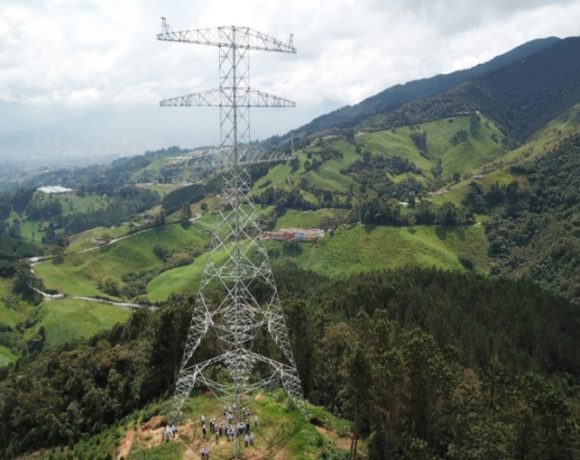Cementos Argos 2Q 2020 Profits Drop 79% Year-on-Year on Covid Crisis

Medellin-based multinational cement/concrete giant Cementos Argos reported August 6 that its second quarter (2Q) 2020 net profits dropped 79% year-on-year, to COP$12 billion (US$3.2 million).
Revenues likewise declined by 9%, to COP$2.1 trillion (US$555 million), while adjusted earnings before interest, taxes, depreciation and amortization fell 6.4%, to COP$414 billion (US$109 million).
For all of first half (1H) 2020, profits dropped 77.8%, to COP$16 billion (US$4.2 million), while revenues are down 4.6%. Adjusted EBITDA for 1H 2020 is essentially unchanged versus 1H 2019, according to the company.
Colombia Results
In Colombia, adjusted EBITDA for 2Q 2020 fell 62%, to COP$43 billion (US$11 million), while revenues fell 44%, to COP$316 billion (US$83.5 million), according to Cementos Argos.
Cement volumes fell 46% while ready-mixed concrete (RMC) volumes were down 56%. Aggregate sales likewise fell 61%.
“At the beginning of the second the quarter, Colombia experienced a complete lockdown across the country, with a gradual reopening starting from mid-April,” the company noted.
“The cement market has experienced a gradual recovery ever since, as evidenced by the monthly increases in cement consumption published by [Colombia’s economic statistics agency] DANE, up 191% month-on-month [MoM] in May and 28% MoM in June — but still presenting monthly consumptions below last year’s levels,” according to Argos.
“Regarding the market dynamics per sectors, the residential segment has evidenced an improvement during the last two months, but it has not achieved yet its full potential. Sales of new houses during June increased 60% MoM, still implying a decrease of -13% year-on-year.
“On this segment, the government has announced a subsidy for200,000 houses, to be equally split between social housing and non-social housing, which we expect will have a positive impact in the residential segment in the mid-term.
“On the infrastructure front, the government has announced that around 90% of all the construction sites related to this sector have been already reactivated in the country, in line with our expectations of a good performance of the sector during the current year.
“The government has also announced the ‘5G’ [fifth-generation highway] infrastructure projects with an estimated investment of COP$20 trillion [US$5.3 billion] for the first package of concessions to be awarded, which could start its structuring process in early 2021,” according to the company.
U.S. Results
“The U.S. market continued to prove its resilience during the second quarter of 2020, with healthy market dynamics despite the evolution of the pandemic in states such as Texas and Florida,” according to Argos.
“Cement volumes experienced a decrease of 5.8% year-over-year, affected mainly by lower volumes in the Northeast region, due to the strictness of the lockdown measures, as well as by a reduced demand from the wholesale segment.”
Caribbean & Central America (CCA) Results
During 2Q 2020, “most of the countries within the CCA region experienced total or partial quarantines, affecting the volumes of the region,” according to Argos.
“Cement and RMC volumes decreased 23.9% and 90.6% respectively as a consequence of these lockdown measures. Honduras and Dominican Republic experienced a gradual recovery from mid-April on, to the point that the monthly volumes of June 2020 surpassed in 7% and 16% respectively when compared to the same month of 2019.
“Panama, on the other hand, only started its partial reopening from the first weeks of June, when some infrastructure projects were allowed to be reopened. During that month, the country managed to recover volumes in a 65%, when compared to the volume of June 2019,” Argos added.
“Haiti not only remained open during the whole quarter, but also experienced a 5.3% increase in volume, and a 9.7% increase in prices when compared to the same quarter of last year, as a result of the positive market dynamics that the country exhibits.
“This positive evolution within the [CCA] region indicates that some countries may recover faster than initially expected. We remain cautiously optimistic about the second half of the year, considering that countries such as Dominican Republic will face a change of President, and also taking into account the limited public budgets that these countries have to face the later consequences of the pandemic,” Argos concluded.
















